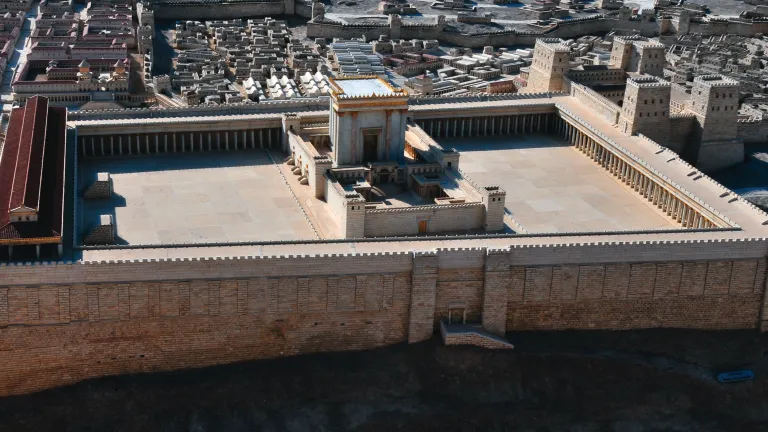God, Science and the Bible: Nehemiah's Wall Discovered?
Until now, few remains from Nehemiah's time in Jerusalem (444-432 B.C.) have been uncovered. But now, Eilat Mazar, a Hebrew University archaeologist digging in the city, believes she has identified remnants of that famous wall that protected Jerusalem after the Jews returned from the Babylonian captivity.
"So the wall was finished on the twenty-fifth day of Elul, in fifty-two days. And it happened, when all our enemies heard of it, and all the nations around us saw these things, that they were very disheartened in their own eyes; for they perceived that this work was done by our God," wrote Nehemiah, a fifth-century-B.C. governor of Judea, as recorded in Nehemiah 6:15-16.
Until now, few remains from Nehemiah's time in Jerusalem (444-432 B.C.) have been uncovered. But now, Eilat Mazar, a Hebrew University archaeologist digging in the city, believes she has identified remnants of that famous wall that protected Jerusalem after the Jews returned from the Babylonian captivity.
While the wall had been uncovered earlier, archaeologists had assumed it dated to the Hasmonean Period (141-37 B.C.), well after Nehemiah's time. But in stabilizing a tower that was part of the wall to prevent its collapse, excavators found immediately under it pottery and arrowheads dating to the Babylonian destruction of Jerusalem in 586 B.C. and pottery and a seal impression dating to the Persian Period (6th to 5th centuries B.C.).
No later remains were found, which indicates that the tower and wall dated to the time of Nehemiah's building of defensive walls around the city as described in the biblical book that bears his name. Judah at that time was a province of the Persian Empire, which is why archaeological remains from this time are referred to as being from the Persian Period.
"This find opens a new chapter in the history of Jerusalem," Dr. Mazar said. "Until now, we have never had such an archaeological wealth of finds from Nehemiah's period" ("Nehemiah's Wall Uncovered," The Jerusalem Post, Nov. 28, 2007).
The Bible records that Nehemiah, cupbearer to the Persian king Artaxerxes, received permission from the king to rebuild the walls around Jerusalem, which had been destroyed by the Babylonians a century and a half earlier. He also repopulated Jerusalem and restored it as the capital of Judea. It was a bustling city by the time Jesus Christ arrived some four centuries later.
The tower in question lies at the back of the walls of a large stone structure that Dr. Mazar unearthed in 2005 and tentatively identified as the palace of King David (see "Remains of King David's Palace found in Jerusalem?" The Good News, September-October 2005). This indicates that the structure must have been built first and supports her claim that the site was King David's palace. While conclusions are still preliminary, these finds appear to further strengthen the historical accuracy of the biblical accounts.






